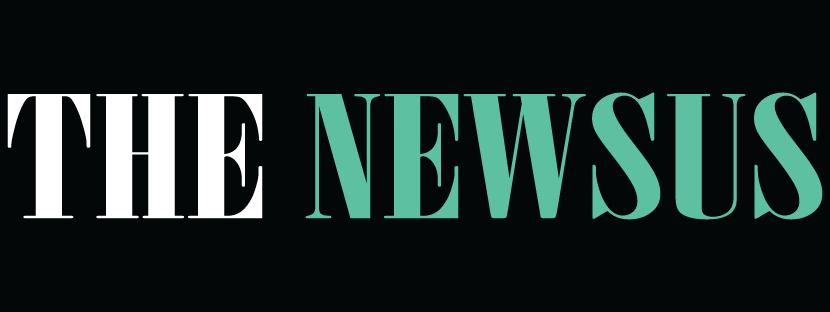Uncovering Top Talent in the Compliance Search Process
In today’s rapidly evolving regulatory environment, finding the right talent for your compliance team is crucial. A strong, effective compliance...

In today’s rapidly evolving regulatory environment, finding the right talent for your compliance team is crucial. A strong, effective compliance function is essential for ensuring your organization stays in line with legal requirements, maintains ethical standards, and minimizes risk. However, the process of identifying and recruiting top talent can be a challenge. This blog post aims to guide you through the Compliance Search process, helping you uncover the best candidates and build a team that can safeguard your business from regulatory pitfalls.
1. Understanding the Importance of Compliance Talent
Compliance professionals play a pivotal role in any organization, helping ensure that internal policies and external regulations are being followed. Their responsibilities often include risk management, legal reporting, audits, and ensuring that the business complies with industry-specific standards. Given the complexity of the regulatory landscape and the increasing scrutiny on businesses, it’s important to understand what skills are essential when conducting a Compliance Search.
By understanding the scope of compliance duties, you can identify the specific qualifications and experience you need in a candidate. The compliance landscape is diverse and includes various sectors like financial services, healthcare, data privacy, and more. Each requires unique expertise, making it important to tailor your search process accordingly.
2. Crafting an Effective Job Description
One of the first steps in the Compliance Search process is writing a comprehensive and clear job description. This document sets the tone for your recruitment efforts and ensures that you attract the right candidates. Start by outlining the primary responsibilities of the position, the qualifications needed, and the level of experience required. Be specific about the industry expertise and technical skills necessary for the role.
A well-crafted job description should also include the following key elements:
- Job title: Clearly state the role (e.g., Compliance Officer, Compliance Analyst, Regulatory Affairs Manager).
- Responsibilities: Detail day-to-day duties and expectations.
- Required skills and qualifications: This includes educational background, certifications, and specific industry experience.
- Soft skills: Communication, attention to detail, and problem-solving abilities are crucial in compliance roles.
- Company culture: Highlight the values and work environment to attract candidates who align with your organization’s ethos.
Remember, when recruiting for compliance roles, it’s important to balance technical expertise with soft skills. While industry knowledge is essential, a candidate’s ability to collaborate and communicate effectively with other departments is equally valuable.
3. Sourcing Candidates: Where to Look
Now that you have a solid job description, the next step is to figure out where to find the best candidates. Depending on your needs, you may want to explore several sourcing channels.
Online job boards such as LinkedIn, Indeed, and Glassdoor are great places to start. Many compliance professionals actively search for job opportunities through these platforms. Additionally, leveraging specialized recruitment agencies that focus on compliance or legal roles can help you narrow down your search. These agencies often have access to a network of experienced professionals who may not be actively seeking new roles but could be the right fit for your organization.
Another option is to attend industry-specific events, such as compliance seminars or conferences. These events can help you connect with professionals who are passionate about their field and open to new career opportunities.
Lastly, internal talent pools are often overlooked. If your organization already has employees in other departments who have experience or interest in compliance, consider promoting from within.
4. Screening and Interviewing Candidates
After sourcing a pool of candidates, the next step is to begin the screening process. This is where you assess resumes, conduct phone interviews, and narrow down the most promising candidates. Here are some tips for effective screening:
- Review resumes carefully: Focus on previous compliance-related roles, certifications (such as Certified Compliance & Ethics Professional, or CCEP), and relevant industry knowledge. Look for evidence of ongoing professional development, such as attending training or completing certifications.
- Conduct phone screenings: Initial interviews help gauge a candidate’s communication skills, enthusiasm for the role, and whether they meet the basic qualifications.
- Behavioral interview questions: Ask candidates about specific situations they’ve encountered in their previous roles. For example, “Tell me about a time when you identified a compliance risk. How did you handle it?” This helps assess their problem-solving abilities, attention to detail, and knowledge of compliance processes.
- Assess technical skills: Depending on the compliance function, it’s important to test a candidate’s technical skills. For example, knowledge of software like SAP, Oracle, or Microsoft Excel is often crucial in compliance roles.
Don’t forget to include questions related to ethics and integrity, as compliance professionals must be trusted to make tough decisions in high-pressure situations.
5. Onboarding and Integration
Once you’ve selected your top candidate, the next step is the onboarding process. A well-organized onboarding plan is essential for integrating new hires into your organization and setting them up for success. Here’s what you should consider:
- Training on company policies: Ensure your new hire is familiar with your organization’s internal processes and compliance-related procedures.
- Mentorship and support: Pair the new hire with an experienced team member who can help guide them through the early stages of their employment.
- Compliance tools and systems: Provide the necessary tools, systems, and software training required for the job. This will allow your new hire to be productive quickly and effectively.
A strong onboarding process can help the new hire feel welcomed and ready to contribute to the team, which is critical in a compliance-driven environment.
6. Continuous Development and Retention
Attracting top talent is only part of the equation. Once you’ve recruited the best professionals, you must focus on retaining them and fostering their professional growth. Continuous development is key in the ever-evolving world of compliance. Encourage employees to pursue additional certifications, attend industry seminars, and stay updated with changes in the regulatory landscape.
Additionally, offer clear career progression opportunities within your organization. By investing in your employees’ growth and development, you not only enhance their skills but also increase job satisfaction and reduce turnover.
If you want to build a strong, lasting compliance team, it’s essential to create a culture of continuous learning and support.
Conclusion
Uncovering top talent in the Compliance Search process requires a strategic approach. From crafting detailed job descriptions to sourcing candidates, conducting thorough interviews, and fostering ongoing development, each step plays a role in building an effective compliance team. Remember, the best candidates will not only bring technical expertise but also contribute to a positive, ethical workplace culture.
If you’re ready to begin your search for top compliance professionals, click here for more info and go right here for assistance in streamlining your hiring process.





